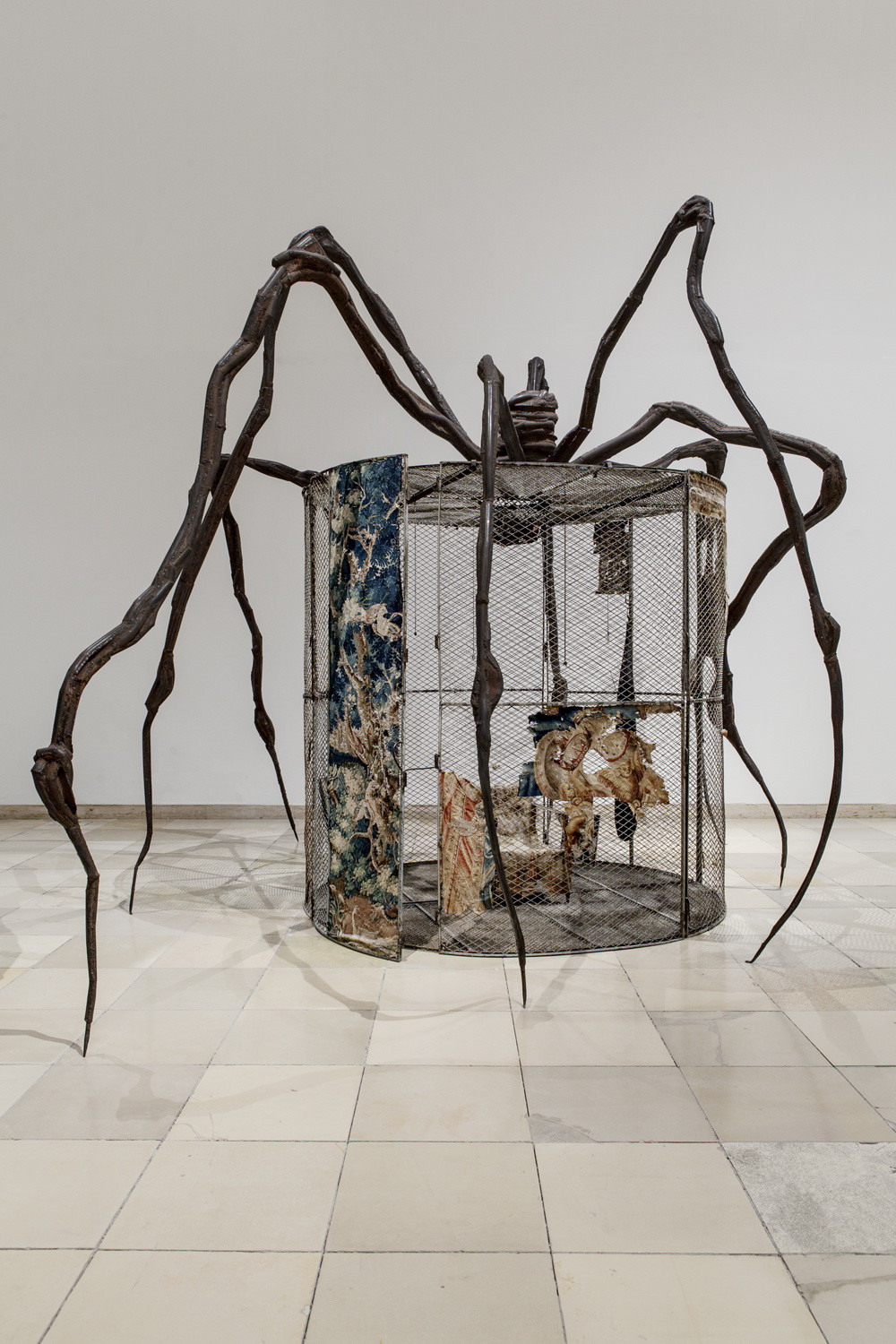Assistant Jerry Gorovoy: I'm Jerry Gorvoy, and I was Louise’s longtime assistant and now head of her foundation.
Louise made many variants of Spider, but there is only one unique_ Spider/Cell,_ and it's the first time where the web of the spider is represented as an enclosure. Of course we can't now, but you are meant to enter that piece and sit in the chair and be underneath the protection of the mother. The spiders were an ode to her mother who was a tapestry restorer, and that's why you see tapestries on the walls of the exterior of the cell.
And you see on the floor there's two tapestry panels, one is of a foot. As a young girl, Louise worked in the family business by drawing in the missing parts of the tapestries that had to be rewoven, and usually the bottoms of the tapestries were worn the most. So Louise became an expert of drawing feet.
All the cells deal with this idea of memory. Louise had this fear of getting rid of anything. Most things that were significant to her she held on to. And when she was quite old, I think she wondered what would happen to all these objects that had meaning to her, and I think she knew that if she incorporated these things within the work, they would survive much longer than her own physical presence.
